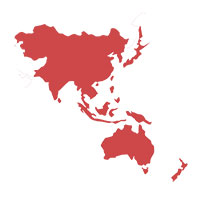Finding a Home for 10 Million People
Kya Lal | December 7, 2015.
Finding a venue to host 40,000 people in Paris was no mean feat. But the UN managed to secure Le Bourget for the COP21 climate conference. It’s spacious, with a great floor plan, good overhead lighting, running water, electricity and lovely afternoon sun. All the features people want in a venue. It’s also all the features you could want in a home.
It would be such a shame to see such a lovely venue go to waste or be dismantled at the end of all this, so I have been thinking of some possible or future uses for it. We’re talking 40,000 people here. By the way, that’s more than double the populations of Tuvalu and Tokelau. Or just under half the population of Kiribati.
At the rate that current negotiations are going, the likelihood of capping global warming at 1.5°C is increasingly slipping. Without a 1.5°C cap it is likely there will be vast numbers of the Pacific looking for a new home. Beyond its clear blue water and beautiful blue skies, the Pacific is in fact one of the most diverse regions on earth. Its 22 countries comprise between 20,000 to 30,000 islands, spread over 500,000km², with 10.5 million people and more than 1200 distinct languages.
All of it is threatened by climate change.
More than 10 million people risk of losing their homes, their livelihoods, their entire country. Climate change has the potential to impact every facet of life in the Pacific. From food and water security to health, sanitation, and economics, climate change may ultimately lead to mass internal displacement and international migration. Due to rising sea levels Pacific islands are being faced with greater wave inundation, accelerated coastal erosion, the growth of wave reach, storm surges and the rise of unpredictable and growing king tides and uncommon weather events.
In some places it means that thin fresh water lenses on these islands are being contaminated by salt water. Resulting in the reduction and destruction of clean fresh drinking water, the inability to grow crops for sustenance or for livelihoods and the potential death of livestock as food and water grow increasingly short in supply. All of this means that these islands could become uninhabitable long before they sink.
The question then becomes: where do they go? Many Pacific people don’t want to leave their islands. Instead, they are fighting and adapting to keep their head about water. Those in Tuvalu have taken a fighting stance saying they’ll fight to keep their country, culture and way of living. Many are not considering any migration scheme. They believe if the right actions are taken to address climate change, Tuvalu will survive.
Conversely, Kiribati has purchased land in Fiji for the price of FJ$8.77 million to help provide additional food sources. But this land is now an option for them to relocate. President Anote Tong has said: “We would hope not to put everyone on [this] one piece of land, but if it became absolutely necessary, yes, we could do it.”
For the people of the Pacific both New Zealand and Australia have often been seen as good relocation options, because of existing families ties, large Pacific communities and have close geographical and political ties to the region. Yet while the climate change Sword of Damocles hangs over the head of the Pacific, positive action from Australia and New Zealand remains tepid, with initial emission reduction targets by both being nowhere near enough to prevent further Climate chaos in the Pacific. Australia’s recent announcement in support the 1.5°C line, however, prompts some hope that progress may ramp up this week.
Though we have seen commitments by both governments for further funding and assistance – to the tune of AU$1.2 billion dollars – what this will actually amount to is yet to be seen.
Moreover current migration pathways to both nations remain limited, with President Anote Tong of Kiribati, highlighting that the ballot system for programs like the New Zealand Pacific Access Category, often saw people rejected. Ongoing case law within both countries also suggests ‘traditional’ refugee pathways for climate refugees from the Pacific are closed. Currently there is no international law for those who are externally displaced due to environmental factors. This leaves the Pacific in limbo.
If leaders cannot come to an agreement here in Paris that limits warming to 1.5°C or lower, then the choices for many Pacific people will be sink or swim? Considering they contribute a negligible amount of emissions, Pacific people face threats to their homes due to the actions of other countries. This is an international outrage.
Ultimately, if Paris can host an extra 40,000 people in an already overcrowded city, other countries will be able to host residents of the Pacific as they are forced to flee. Though as we have seen with Syrian refugees, the welcome mat may not be rolled out willingly. The difference with Pacific refugees, however, is that many may not have a home to return to.








![Secretary-General Ban Ki-moon meets with Leaders from Small Island Developing States
[Secretary-General’s Conference room, Le Bourget]
- H.E. Mr. Anote Tong, President of Kiribati
- H.E. Mr. Christopher J. Loeak, President of Marshall Islands
- H.E. Mr. Freundel Stuart, Prime Minister of Barbados
- H.E. Mr. Kenny Davis Anthony, Prime Minister of Saint Lucia
- H.E. Mr. Enele Sosene Sopoaga, Prime Minister of Tuvalu](https://theverb.org/wp-content/uploads/2015/12/SG-Travel2-e1449660252704-120x120.jpg)




comment